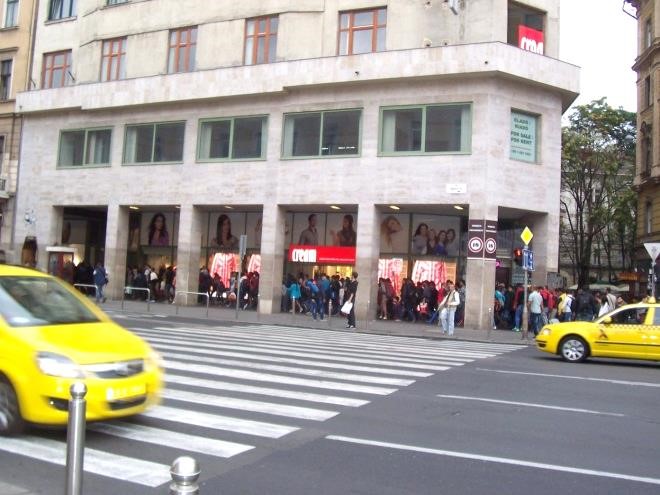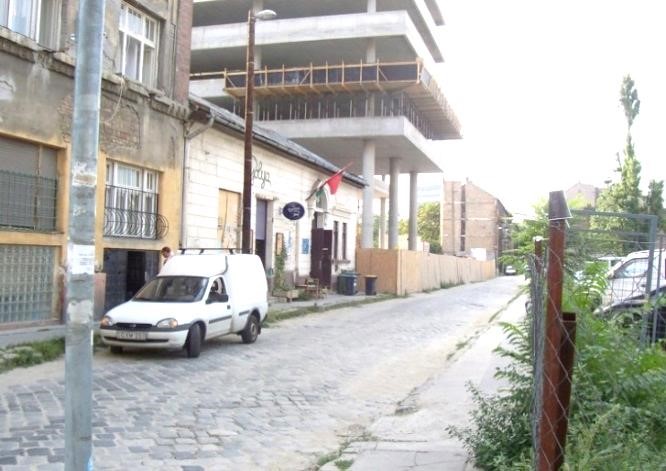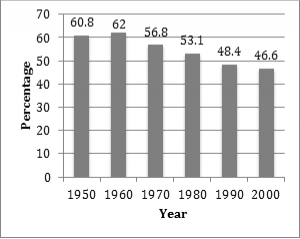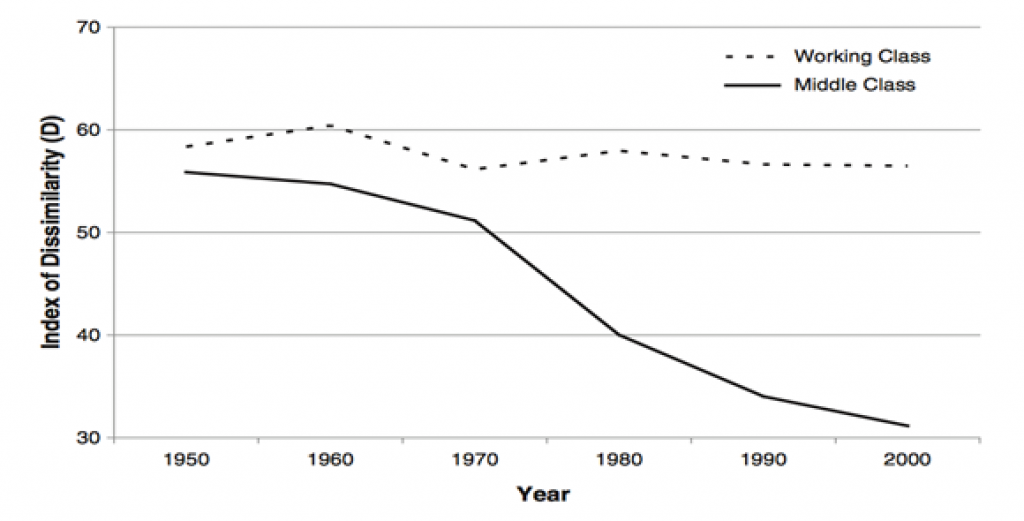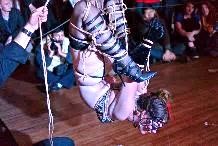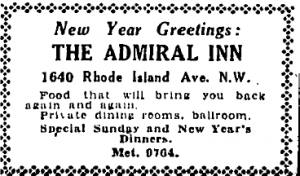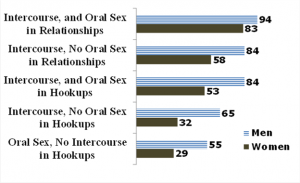A discussion with Ron Manderscheid
On August 4, 2015, The Sociologist (TS) interviewed Ron Manderscheid about mental health services delivery and gun violence in the U.S. He is the Executive Director of the National Association of County Behavioral Health and Developmental Disability Directors. He is Adjunct Professor at the Department of Mental Health, Bloomberg School of Public Health, Johns Hopkins University. He is the recipient of DCSS’s Lifetime Achievement Award. Below we have reproduced excerpts from the interview.
TS: How do gun violence and mental health intersect?
Ron Manderscheid: The broadest sweep of the issue here is people dying by gun violence. A subset of this issue is mentally ill people committing this gun violence. By the same token, there are a number of mentally ill people who have been killed by the police per the article carried in the Washington Post on June 15, 2015. And I was interviewed for that report. In my opinion, in the broadest statement of the issue, I do not believe that you can simply solve the problem by mental health legislation. If you want to solve the problem at the intersection of mental health and gun violence, you have to do a number of things. You probably have to improve our U.S. mental health service delivery system. But, most clearly, you have to take on the problem of gun violence.
Gun Violence
TS: But, gun violence is not going to end anytime soon.
Ron Manderscheid: I understand that. I know it is a tall climb, but it absolutely needs to be stated that you must do something about gun violence if we are going to have an impact on this problem. I want to cite Australia. In the 1990s, Australia was developing gun problems similar to our problems: there were more and more cases where multiple people were being killed by gun violence. So, what did they do? They controlled guns.

Source: The Federal Bureau of Investigations (FBI). reference firearms collection contains more than 7,000 guns – just about every make and model https://www.fbi.gov/news/galleries/2013-photo-gallery.
This is one of the big ticket items we need to address. I have to agree with you; it is exceptionally difficult to do, because of the Second Amendment to the Constitution. However, I have to ask: “If you’re a hunter, hunting squirrels or ducks, or even deer, do you need a military-style assault rifle to do hunting?
Support for Gun Legislation
TS: After the Sandy Hook shooting occurred, there was groundswell of support for some kind of gun control.
Ron Manderscheid: Yes, there was, and I organized a coalition in the mental health community and we communicated with the President of the Senate, the Speaker of the House, the President of the United States. I went to a work-group in the White House. We said in our initiative, we need gun control legislation. And there was a groundswell for that. Then what happened?
The gun lobby intervened and within 6 months, all the groundswell to do something about guns just disappeared. So, by June of that year (2013), the groundswell to actually do gun control was gone. And unfortunately, some excellent legislation that would have addressed mental health issues was lost because it was attached as an amendment to the draft gun legislation.
So, no matter what we say about mental health, to be honest, we need gun control legislation. The issue is: does our society have the will to do that right now? This is the biggest context here.
Mental Health Service Delivery
And within that context, I would also be the first to say we absolutely need to improve the delivery of mental health services in the United States. A key example is this: tonight there are going to be 750,000 people in the county jails of the United States. Of this number, 25 percent are people with mental illness, 50 percent are people with substance use conditions, and there is huge overlap between the two. So, three-quarters of the people in the jails tonight have these conditions. Most of these people are in our jails inappropriately; they never should have been there in the first place. So, how did they get there inappropriately?
They got there because they were homeless and they were out in the street, and the police came and swept them up into jail. They are there because they were mentally ill and they were having an episode and someone called 911, the police came and picked them up, there was no place to take them but the county jail. Others were high on drugs and the police came along and picked them up.
What’s wrong with this picture is several things: we have not trained our police in large-scale to deal with these circumstances. And because we have not trained the police, you get exactly what the Washington Post is reporting about: police shooting the mentally ill.
In some cases, the police are frightened of them and they shoot because they don’t know what to do and don’t know how to react to the situation. So, there is a huge need for Crisis Intervention Training (CIT) for police.
Training and Restoration Centers
TS: So, where do we begin to solve these problems?
Ron Manderscheid: We begin with a proposal by Senator Dick Durbin and Senator Ted Cruz that all police in the United States should have CIT; they propose federal legislation to provide the resources to do this. So, it is not a pie-in-the-sky concept, there’s actually potential practical action here. But that’s only one step. Another step that is absolutely critical is the trained police need a place to take persons with mental illness or drug conditions. And we have that program too; it is called the Restoration Center. We have model Restoration Centers in the United States. The best is in San Antonio, Texas (Bexar County).
Every single police officer in Bexar County has had CIT and the county supports an excellent Restoration Center. They don’t have adverse instances anymore, because the police don’t take the people to jail; the police take the people to the Restoration Center. All the police officers know how the Restoration Center operates. They have moved on beyond this. The next issue: is the Restoration Center enough?
Of course not; you need a continuum of crisis services and these services would begin with ‘warm lines,’ warm telephone lines run by people who have been mental health service consumers themselves. We call them peer supporters. When I am having a crisis, I can dial the 800 number and call that person who understands my issue and can empathize with me.
Peer supporters are important in the delivery system. The 911 capacity includes police who are trained in CIT, and systems with Restoration Centers. So, what do you do after the person has been to the Restoration Center?
You need to get them engaged in the county behavioral health system with a care coordinator or a case manager; who might also be a peer supporter. So the person gets engaged in ongoing care for whatever their issue is. Here’s a real case from San Antonio — this is absolutely a true story — the police pick up a person on the RiverWalk; the person was inebriated; they took the person to the Restoration Center. The person had been out on the streets of San Antonio drinking off and on for 8 or 9 months. The Restoration Center worked with that person. The person got engaged in ongoing substance use care. It turns out the person was a professor from a university.
And so the next step was, we need to get this person restored to their role, so the people in the substance use system contacted a local university. That person is now teaching in San Antonio. That’s the kind of success you can have if you have a system in place. We need these community systems of care but they have to have key characteristics of care delivery.
Key Characteristics of Care
The care must be Trauma Informed Care, which is delivered with the clear recognition that most mental illness and substance use problems come from previous trauma. So, we would say, about 75 percent of all mental illness is caused by trauma. If that’s the case, you need trauma informed care. Another important characteristic of care is that it must be recovery-oriented, which is designed to help you regain your life. This is the kind of care that helped the professor regain his role as a university instructor and reengaged him in the community, so he has a place to live; he has social support and a mentor, and he has a job, and if he needs it, he has job support. This is what recovery is about.
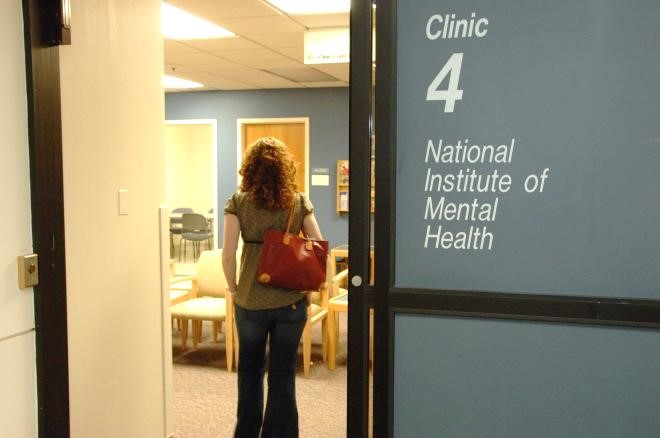
Source: National Institute of Mental Health, National Institutes of Health, Department of Health and Human Services. https://www.nimh.nih.gov/news/image-library/index.shtml.
Recovery is very much the new message in mental health. I have worked in the mental health field for 40 years. When I first worked at the National Institute of Mental Health, the assumption was: if you were once with us for care, you were always going to be with us. That is not the assumption anymore. The assumption now is: we can give you care, you can recover, you can regain your life in the community, and through self-management, and in some cases through various types of drug therapies you can have a full life in the community. You don’t need to come back to us anymore.
The Community Mental Health System
TS: There is a narrative about the de-institutionalization of the mentally ill under President Reagan; that the gaps in mental health services delivery were exacerbated during that period?
Ron Manderscheid: How did we come to have all these gaps? I lived through that period, and I know the statistics. In 1963, President Kennedy signed the Community Mental Centers Health Act and it called for 1,500 community mental health centers in the United States – each of which would serve 75,000 to 150,000 people and all together would cover the entire United States. That was the vision.
By the time Ronald Reagan became President, we had built 804 of the 1,500. When President Ronald Reagan moved into Office, the program was defunded. So, the rest of the country never got these centers to begin with. President Reagan reallocated 25 percent of the federal money that went into building these centers and gave the remaining 75 percent to the states in the form of block grants.
During the 1980s and 1990s, we had deficiencies in our system — we were not serving enough people who were homeless and were mentally ill. They came out of the state hospitals and there were no community mental health services for them in many places.
Some of them went to nursing homes and the door was closed to them after a while. The latest iteration is that large numbers of them are going into county jails. This is the symptom of failed community services. With the recession of 2008 we hit a stone wall when an additional $4 to $5 billion was taken out of the mental health system. We really were in crisis.
What has helped us in the last few years is the passage of the Affordable Care Act (ACA) and the money that is going to the states in the form of State Medicaid expansions; 30 states have done this and 20 states have not.
The picture is not what it ought to be, but it is better than it was a few years ago because we have the ACA.
System Inadequacies and Fixes
There are over 3,000 counties in the United States and 85 percent of those counties have either no mental health services or inadequate mental health services.
These are usually the smaller counties with minimal resources, so if you live in one of these counties and you have mental illness, you have great difficulty getting any care because there’s no care to get. Because of this, we think there’s need for mental health reform legislation and right now, there is a bill in the House introduced by Representative Tim Murphy and Representative Eddie Bernice Johnson.
There’s a parallel bill in the Senate introduced by Senator Bill Cassidy and Senator Christopher Murphy. The question is: do these bills do the things that need to be done as I talked about?
Another important issue is: people who have serious mental illness and use the public mental health system die 25 years earlier than other people.
I made this discovery through my research which was published in 2006. This is happening because the people may receive care from the mental health system, but they did not get needed primary care.
Therefore, issues like high blood pressure are not caught which may lead to a stroke or heart attack. And so in the future system, we need mental health and substance abuse care linked with primary care. This is a huge advantage of the ACA.
TS: How do we evaluate a person for mental health in a primary care setting?
Ron Manderscheid: We have tools to evaluate a person in the primary health setting to screen for mental health and substance abuse conditions such as the PHQ9 (Patient Health Questionnaire) which picks up depression or anxiety.
There are tools to pick up substance use problems as well such as the SBIRT (Screening Brief Intervention and Referral to Treatment).
If we move the care to an integrated delivery system, what are called ‘medical homes,’ it would be the behavioral health professional in the medical home team who would screen for mental health condition. This new system is just starting. The Centers for Medicare and Medicaid Services (CMS) are giving states funding to implement medical and health homes.



